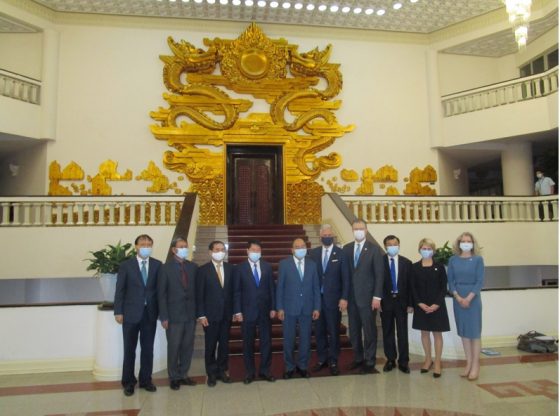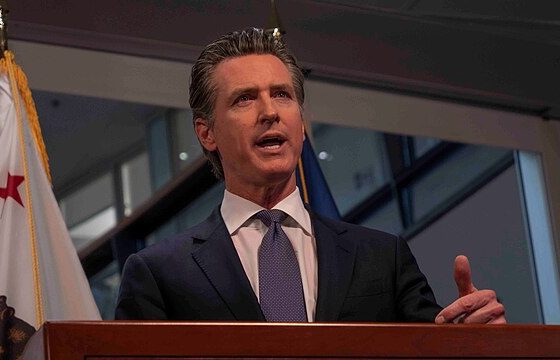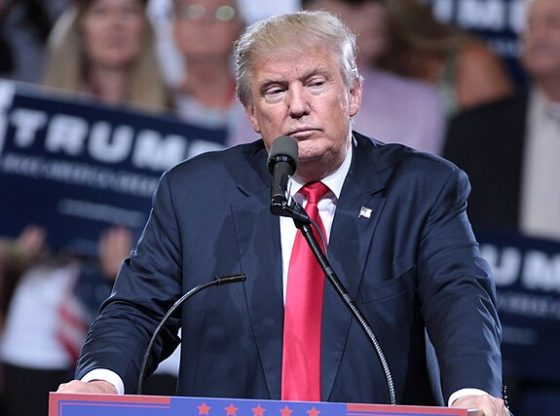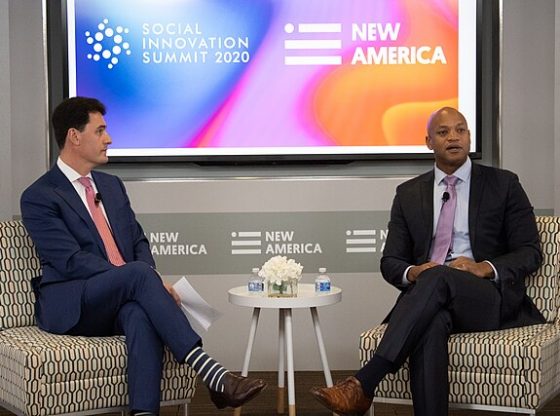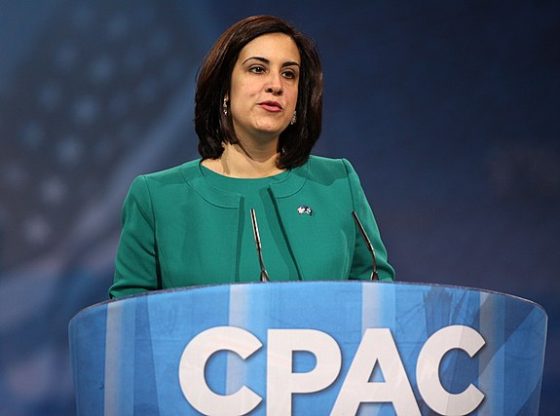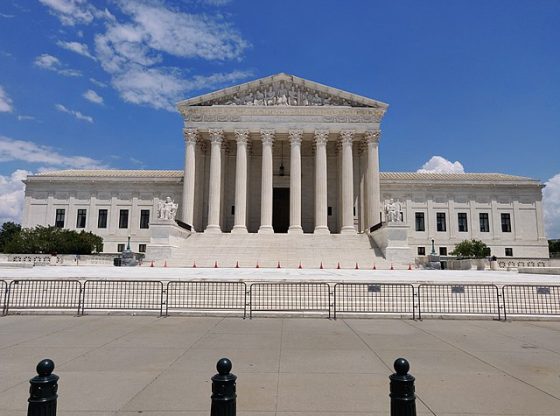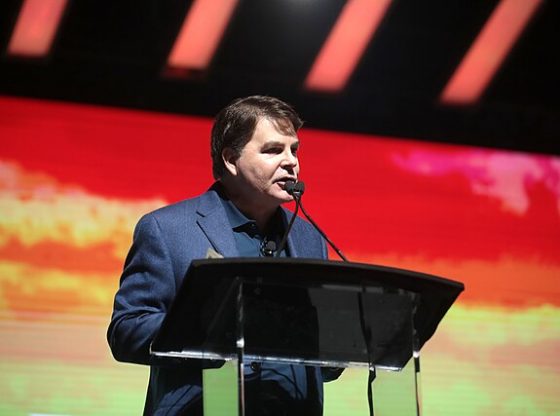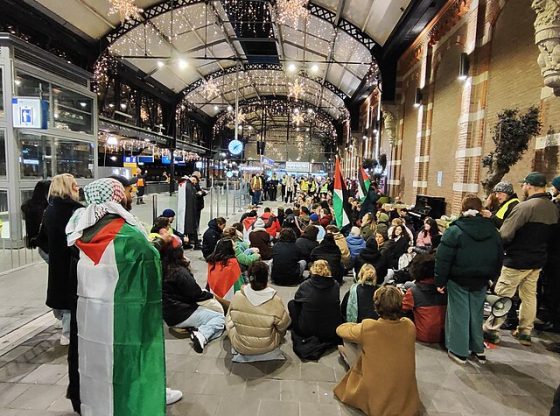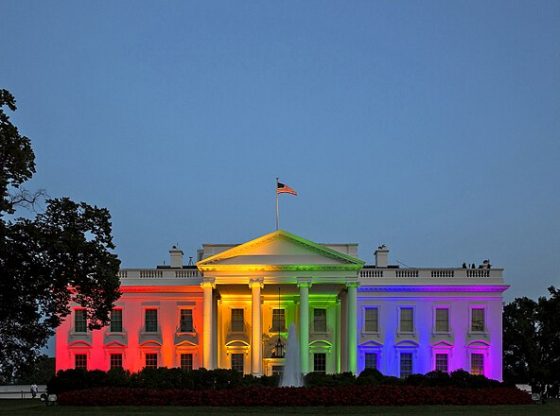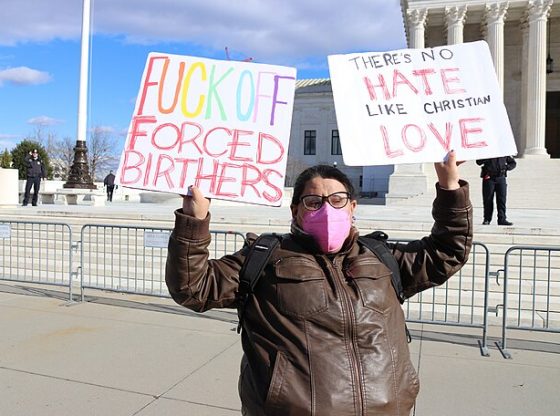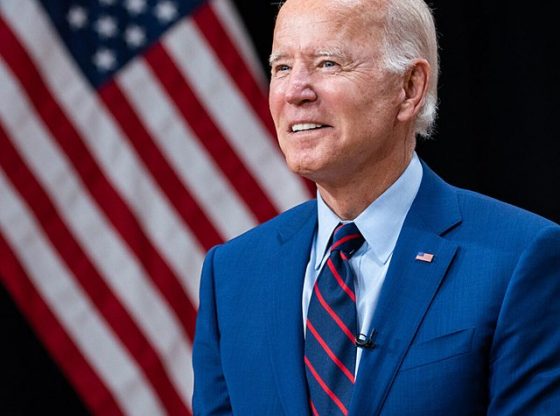The opinions expressed by columnists are their own and do not necessarily represent the views of TrumpTrainNews.com
SOMEWHERE OVER THE PACIFIC OCEAN — Despite the convenience of flying aboard the majestic Air Force Two, the Chinese Communist party virus turned the recent Asian diplomatic mission of National Security Adviser Robert C. O’Brien, into something that sometimes felt as swift as a rickshaw ride. For O’Brien, his amiable staff, intrepid Secret Service detail, and Export-Import Bank President Kimberly A. Reed, Esq., the dreadful China virus made this a truly long, strange trip.
Air Force Two — or USAF 80002, as it actually is called when the vice president is not aboard — is a modified Boeing 757. While no one needs a ticket to ride, the plane is mainly reminiscent of business class, with two spacious leather seats on either side of the aisle. In back: four economy-style rows with three chairs left of center and three right. The middle cabin has business-class seats and folding leaves of two large tables on which key staffers manage the ever-unfolding demands of an overseas trip involving top White House personnel. They also monitor their duties on Pennsylvania Avenue and perform their home jobs and traveling responsibilities, all at once. On-board computer printers and copying machines make this easier. A 35,000-foot altitude is not high enough to escape such administrative needs.
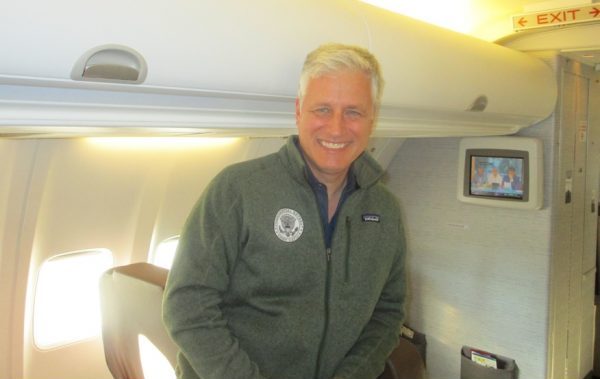
Behind a sliding door, the principal — in this case APNSA, the Assistant to the President for National Security Affairs — has a private cabin slightly larger than the smallest studio apartment I ever saw in Manhattan. (Fitting today’s aviation theme, its resident’s surname was Cluck.) Inside, a sofa unfolds into a bed. Two large captain’s chairs straddle a decent-sized desk. The dedicated restroom is a classy touch. O’Brien stays busy on the phone with colleagues in Washington and his opposite numbers around the world. On the wall, opposite the windows, Fox News Channel pumps non-stop truth through a large HDTV.
Up front, a cadre of communications aides keeps this flying Situation Room in close touch with anyone on the ground the passengers need to reach — and vice versa.
Despite their civilian-looking attire, the stewards and stewardesses are active-duty Air Force personnel. Their previous service ranges from honor-guard duty to combat missions against Islamofascists in Iraq. Like so many military personnel, they are uniformly disciplined, attentive, and courteous.
This aircraft follows no published schedule. It comes and goes when APNSA and his team are ready to move. Ironically, the final word in private aviation turns out to be a U.S. government jet.
With all of these benefits and modern touches, one might think a non-stop flight from Washington, D.C. to Hanoi would be a snap.
Not a chance.
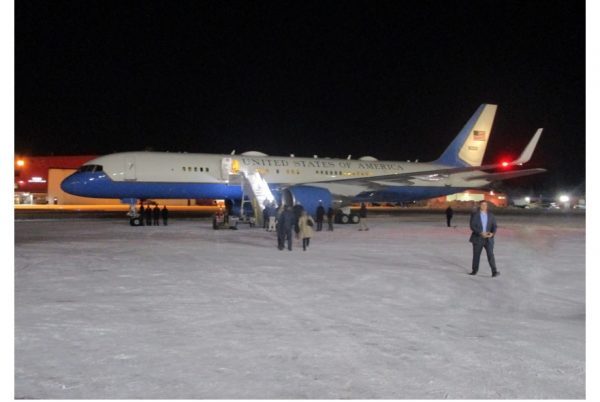
From Joint Base Andrews on Wednesday afternoon, November 18, we flew seven hours to Anchorage, Alaska, to refuel. After a brief trudge through the snow and 17-degree temperatures, we wolfed down pizza at the Signature Air lounge. The very tall Governor Mike Dunleavy (R – Alaska) dropped by to huddle with O’Brien, greet the delegation, and welcome us, as he put it, to “the greatest state in the greatest country in the world.”
Seven-and-a-half more hours over the Pacific took us to Yakota Air Base, about a one-hour drive west of Tokyo. O’Brien’s entourage, including yours truly, was asked to remain in our comfortable rooms in Distinguished Visitors Housing, to reduce the risk of infection. Some ventured around the compound the next morning, but everyone was forbidden to step outside of it.
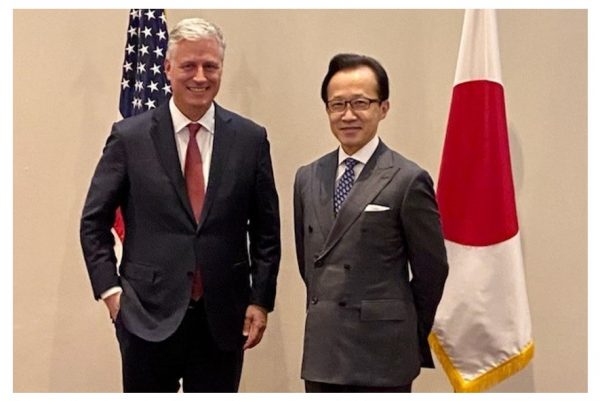
Yakota Air Base. Official photo via Twitter.
As Stars and Stripes reported, there happened to be a 16-case spike in new COVID-19 infections at Yakota Air Base on the exact day we were there. That was atop the facility’s 19 existing cases. Incredible! It was as if Xi Jinping sent his Maoist microbes to chase us around the Pacific.
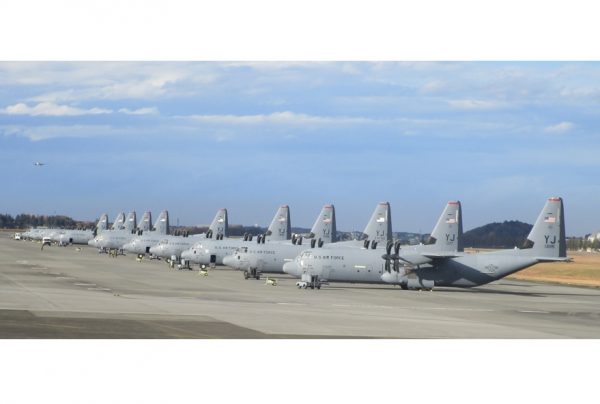
Another five hours through the clouds brought us to Hanoi and its luxurious Metropole Hotel. It was built in 1901, when Paris controlled a colony called French Indochina. Like many elegant buildings nearby, the Metropole’s architectural style was more Musee D’Orsay than Mekong Delta.
Saturday night’s first and only order of business was COVID-19 tests for all. The good news is that local medical personnel probed only one nostril each, rather than two. Alas, they used the deep-dive test, not the kinder, gentler Q-Tip-in-the-nostrils assay. Even worse, they also swabbed the backs of our throats, which surely triggered the gag reflex of all but the toxically stoic among us.
After that warm greeting, the entire U.S. delegation was ordered into high-class house arrest. While our tests were processed, we were confined overnight to our posh hotel rooms.
The Metropole’s room service was smashing, as confirmed by my entrée: slow-cooked short-rib in red-wine reduction. This was far more inspiring than the previous evening’s special at Yakota: Sandwich a la Air Force, paired with a bag of Flamin’ Hot Cheetos.
Several of us capitalized on the mandatory down time and binge-watched episodes of The Crown, Netflix’s spectacular series on Queen Elizabeth II, the British royal family, and the galaxy of prime ministers and other socio-political figures who revolve around them. Episode four told the true story of Michael Fagan, who broke into Buckingham Palace, tracked down Her Britannic Majesty’s bedroom, and then sat on her blankets for a chat.
This installment was characteristically well written, perfectly acted, and beautifully shot and edited. Its soundtrack made exquisite use of ska music, particularly The Specials’ “Monkey Man.” While an evening along the sidewalks of Hanoi would have been preferable, a dramatized visit to 1982 London was a worthy consolation prize.
On Sunday morning, our official program finally began. Remember: We left Washington, D.C. on Wednesday, four days earlier. The International Date Line added a day to that total, but still.
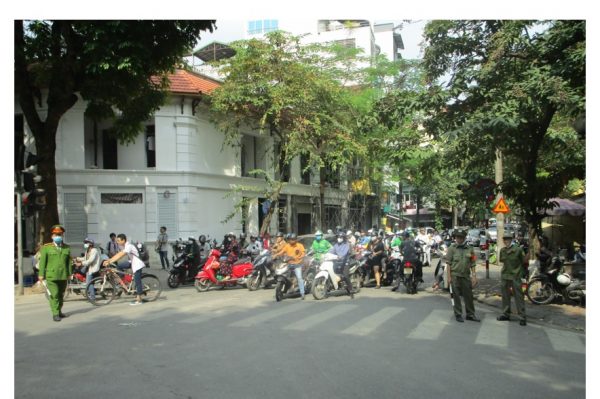
Regardless, the Vietnamese kept us in a sanitized bubble. Their country had gone months with zero community infections of COVID-19, thanks to highly limited foreign arrivals and strict restrictions on those, like us, who were fortunate to gain entry. Our hosts were not about to risk getting sickened by some itinerant Gringos. Who could blame them?
As such, for the balance of our stay in Hanoi, we could leave our hotel rooms. However, we were sequestered in the Metropole’s seventh floor, where we ate our delicious meals, and — for some — our lodging on the second floor. Beyond that, we were forbidden to enjoy the local attractions, shop, or step outside the hotel, except during official business.
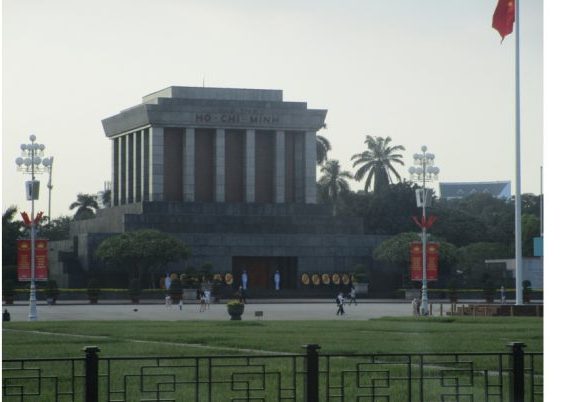
This limited us to drive-by tourism. We enjoyed Hanoi’s sights as we zoomed past them in our motorcade. I aimed my camera through the large window beside me and snapped away photos as rapidly as possible. My plan was to review them slowly at home and use the decent images that revealed themselves to me long after I captured them.
Sunday and Monday, November 22 and 23, were busy days of high-level meetings and photo ops for the senior officials and intermittent down time for the journalists, less-world-famous staffers, and the unfailingly helpful U.S. Embassy personnel. This left us numerous intervals to discuss prescription drugs for various conditions and compare colorful socks.
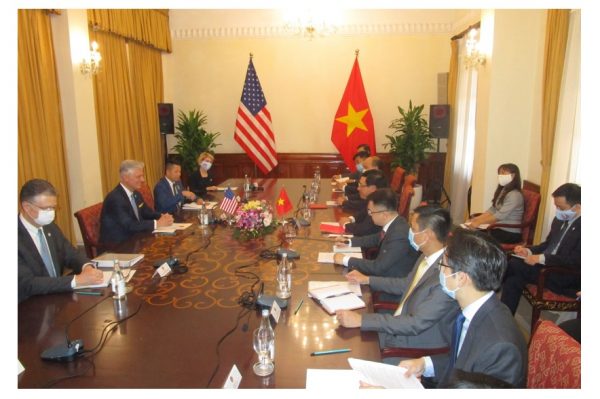
About three air-hours away, Manila featured both tighter and looser treatment. Our Philippine hosts instructed us to wear masks and clear-plastic face shields, adding a disturbing sci-fi element to the proceedings. Conversely, they allowed Team NSC to walk around the five-star Shangri-La at the Fort Hotel, though we could not leave the premises. Several of us dined well, and al fresco, beside the hotel pool. Ceviche and steak are even better with a side order of sultry breeze.
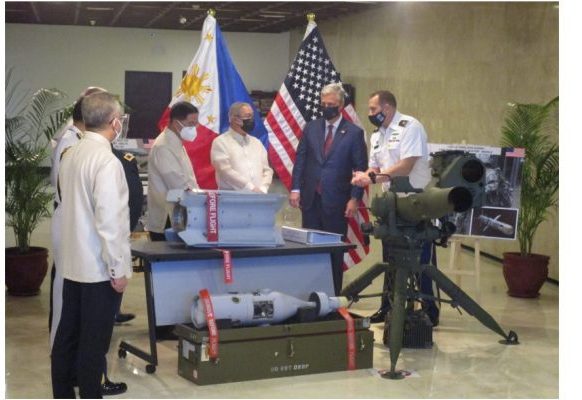
Tuesday morning featured Ambassador O’Brien’s delivery of precision-guided weapons to the Philippine government and then a moving wreath-laying ceremony at Manila’s American Cemetery and Memorial. This is the final resting place for U.S. and Filipino GIs killed in World War II’s Pacific Theater of Operations. In addition to 152 acres that hold 17,184 gravestones, this institution features multiple stone walls bearing the names of 36,286 missing in action.
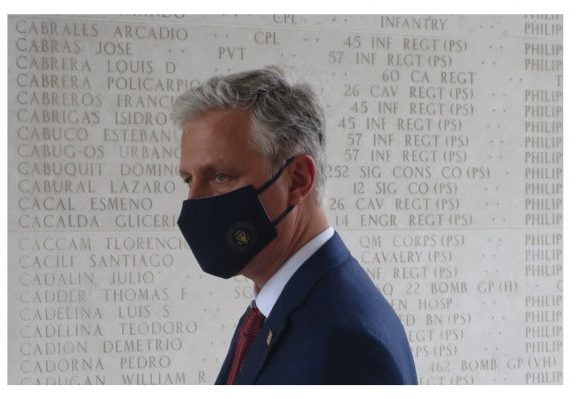
O’Brien paid his respects, conducted a press conference at the cemetery’s indoor museum, and then spoke with regional journalists via conference call. Alas, thanks to pandemic-fueled social-distancing requirements, the room was too small for journalists physically to sit in on this discussion. Instead, we listened to it on a staffer’s cell-phone speaker.
Just before departure, Ambassador O’Brien greeted and thanked a cadre of motorcycle cops who shepherded our motorcade smoothly through Manila’s otherwise notorious congestion.
“Who’s the best rider out here?” O’Brien joked with his local protectors. He gave military-style challenge coins as souvenirs to a lucky few and posed for photos with all eight of them and 10 other security personnel. It’s hard to picture O’Brien’s predecessor, John Bolton, doing any of this.
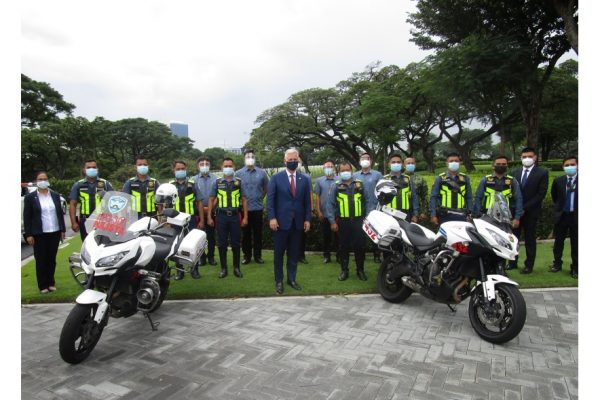
After the tests, quarantines, house-arrest with in-room dining, etc., the entire American delegation eagerly awaited a stop in Hawaii en route home. Aside from a brief press event, we were scheduled to spend 24 hours in the 50th state, with no more COVID-19 restrictions than usual and little else to do while the flight crew took a mandatory rest. Waikiki, here we come!
Not so fast!
Xi Jinping’s Commie-germ cocktail finally caught up with Air APNSA. Unfortunately, one of the communications specialists from the front of the jet tested positive for COVID-19 in Manila. He stayed behind, quarantined himself, and was not aboard as we climbed above the Philippine capital and marveled at its conventional subdivisions and helter-skelter black-market neighborhoods below.
In an abundance of caution, we headed straight home along the least-tropical route imaginable. The pilots aimed USAF 80002 not east to Alohaland but sharply northeast, back to Alaska.
Disappointing? You bet!
But one of several current or former Marines who staff the NSC declared this trip’s informal Latin motto: Semper Gumby. On voyages like these, flexibleness is next to Godliness.
So, toward the tundra we flew.
Eleven hours later, as we deplaned and stared at each other, once again, in Anchorage Airport’s Signature VIP Lounge, I told someone: “We’ve gone from Waikiki to Nokiki.” Rather than forgetting the previous evenings of lockdown while sipping drinks from coconuts, we took turns making hot cocoa on a Keurig machine before tip-toeing through the snow and re-boarding our sleigh from the North Pole to the Lower 48.
After five more hours in the skies, things could not have been sunnier and warmer at the Bob Hope Hollywood-Burbank Airport. APNSA deplaned, thanked everyone around him, and rode with security to his southern California home for Thanksgiving. Several of us stood on the tarmac and enjoyed the fair weather during a 90-minute refueling stop. We also patiently awaited the delivery of a jumbo order of In and Out Burgers, courtesy of a very generous and thoughtful Secret Service agent.
I alerted several staffers to a soothing sight, just beyond the runway. “It’s not Hawaii,” I said, “but at least they have palm trees here.”
Yet another five hours in the air finally brought us back to Joint Base Andrews. A bit of a scramble ensued to get the right bags onto the right vehicles for the 20-minute ride to the Executive Mansion. I alighted, just before the properly credentialed White House employees were allowed back onto what they clandestinely call “The Campus.”
Conceding nothing — in light of rampant, metastatic vote fraud — I waved goodbye to my delightful traveling companions and declared: “Four more years!”
My loyal roller bag and I strolled up 17th Street, Northwest and checked into Club Quarters for our fifth hotel stay in seven nights.
Deroy Murdock is a Manhattan-based Fox News Contributor, a contributing editor with National Review Online, and a senior fellow with the London Center for Policy Research. He has known O’Brien since they won college scholarships from the Washington Crossing Foundation in the 1980s.

